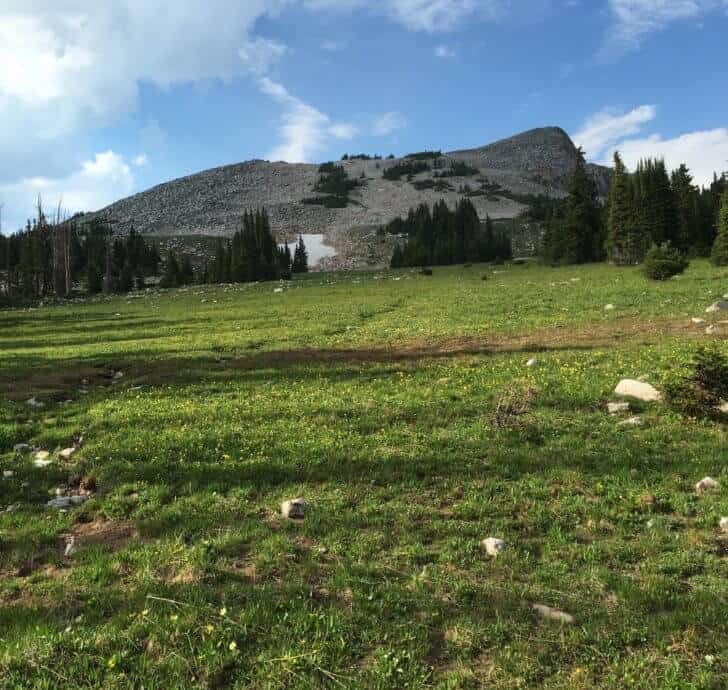Introduction
My last student for the day leaves and I begin my weekend on a late Friday afternoon. I pack up my viola, put my scores to Dvorak’s American String Quartet in my messenger bag and walk home from the University of Wyoming campus contemplating the benefits of living in a rural college town in southeast Wyoming.
It’s July – my Hyperlight Mountain Gear Porter 4400 is packed with three days of food, fourteen pounds of gear, and a book of music manuscript paper. I’m about to leave for seven weeks across the country performing music and having world premieres of several recent compositions, but I need a weekend to explore and to be intimate with nature before I travel as far east as Virginia and as far west as Idaho.
I download the maps to my phone’s Topo Maps Plus App for the Wyoming portion of the Medicine Bow Range and drive out of town with my dad and our dog, Sierra, leaving Laramie for the 12,000’ peaks just west of town. All we have is the downloaded maps, the gear in our packs, 72 hours of time, and no defined plan to guide us on our adventure.
We desired to explore some locations that we hadn’t ventured to yet, to catch some trout, and more importantly to experience the spiritual, emotional, and creative awakenings that mother nature gifts those who explore deep into her depths. Dvorak spent his summer vacation in 1893 viewing American from New York to Spillville, Iowa from a train and listening to the songs of the red-eye vireo from the immigrant community in Spilleville. I needed a more intimate connection with the American landscape than through a train window or a rural community; I needed to be immersed in the subalpine forests, the alpine lakes, and the tundra meadows.
Day 1: From Lake Marie Trailhead to Sucker Lake
On the drive, we decided we would park the car at the Lake Marie trailhead. With the desire to get off the beaten path and have the woods to ourselves as soon as possible, this trailhead provided the quickest route over the West Ridge of Medicine Bow Peak and off the paths that most people stay on in the region. At 5:30 in the afternoon, we headed out, climbing steadily to the ridgetop, listening to the songs of American Pipits and Brown-capped Rosy-Finches.

As the trail crests the ridge it is time to say goodbye to the path and we begin to cross an alpine meadow taking us to a satellite ridge. We will follow this ridge until we reach a draw that funnels us to Sucker Lake. Practicing Leave No Trace, we walk on scattered stones when the opportunity provides, attempting to lessen the impact of our travels on the environment.

As we leave the satellite ridge and descend to Sucker Lake, the alpine meadows become interspersed and soon dominated by stands of subalpine firs. Creeks fed by the last snowfields melting on the ridge provide for a wet and lush forest. It is the antithesis of the arid landscape of Wyoming’s high plains, just an hour away by car.
Member Exclusive
A Premium or Unlimited Membership* is required to view the rest of this article.
* A Basic Membership is required to view Member Q&A events




Home › Forums › Exploring Wyoming’s Medicine Bow Range